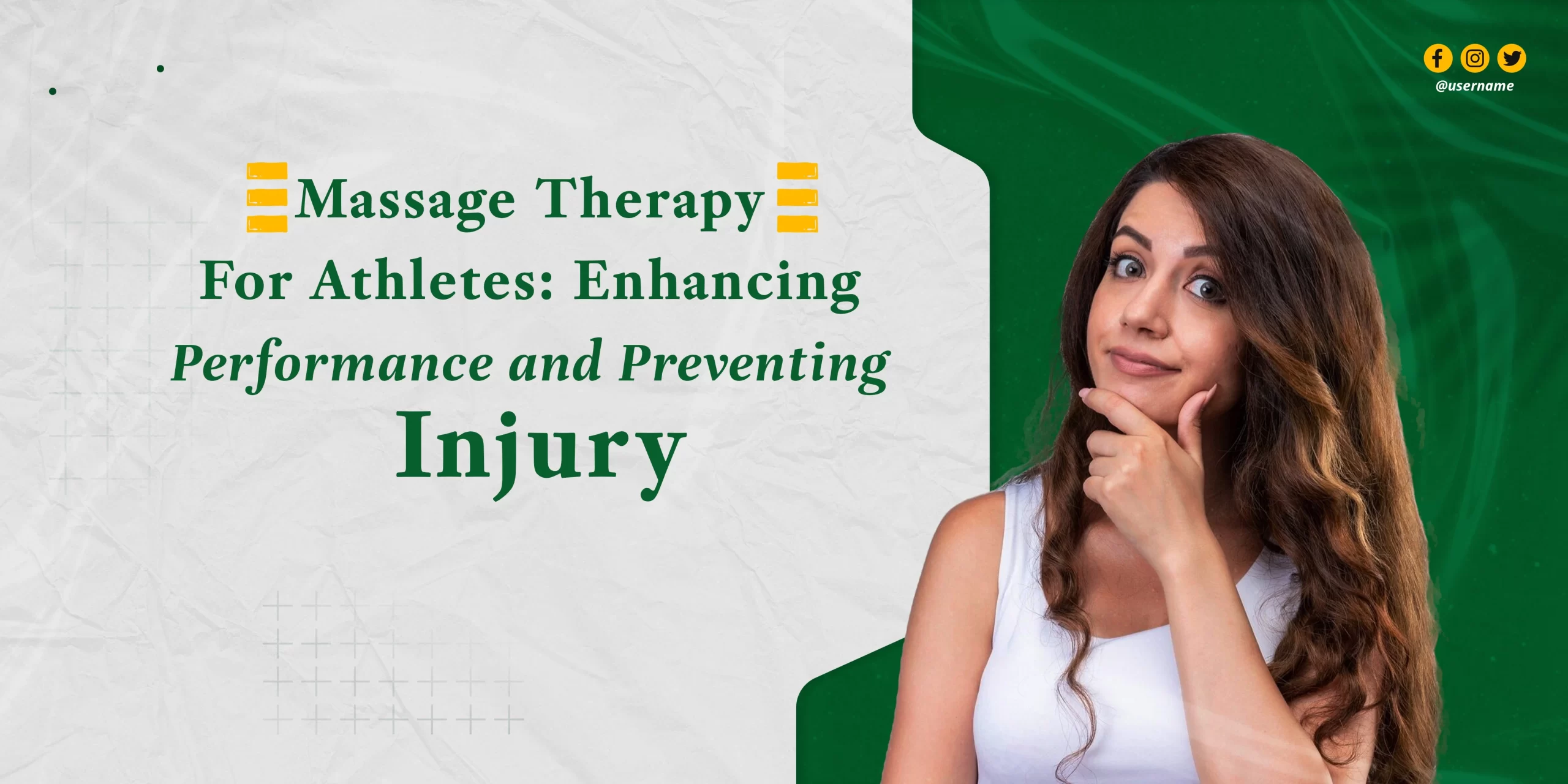
Athletes push their bodies to the extreme in training and competition. Sometimes, they are forced to stretch their bodies through extreme physical exertion, which may lead to injuries while completing training and competitions. Yet, while strength, endurance, and technique are the core of a victorious athlete, recovery and prevention of injury are equally essential. Among the most powerful methods athletes are becoming dependent on to achieve top-notch performance with minimal injury is massage therapy. Whether an athlete or merely someone who participates in regular physical activity, massage therapy is very helpful on the athletic journey.
Role of Massage Therapy in Athlete Recovery
The main purpose of massage therapy is to help the body heal, especially post intense exercise. The muscle experiences micro-tears, tensions, and inflammations upon heavy workout or competition among athletes. Without proper tackling of these concerns, there may be a long-term havoc that may surface, including poor performance, aside from increased chances of getting hurt. Massage therapy facilitates an effective healing process to bring about excellent and desired results, especially in the regard to circulation improvement, relaxing the tensed muscles, and creating relaxing effects.
Massage improves blood flow to the affected areas. Blood brings more oxygen and nutrients to stressed or injured muscles and tissues. Increased circulation flushes out more metabolic waste products such as lactic acid in the body, which accumulate during exercise and cause soreness. It shortens the time needed for muscle repair, thereby allowing athletes more quickly to get back on their feet and return to training or competition.
Enhancing Performance with Massage
One of the most significant advantages of massage therapy is that it increases performance through body preparation for athletic exercise. Frequent massages before the workout or competition will loosen up tight muscles, increase flexibility, and improve the range of movement. Such movements will ease the process of delivering their best among athletes, as well as the risk of injury in high-intensity movements.
There is a type of massage that specifically targets the needs of physically active bodies. The sports massage techniques are directed towards the muscles involved most frequently in athletic activities. Specific pressure applied on those areas would improve the elasticity of the muscles, reduce stiffness in muscles, and release tension that may limit movement.
Sports massage is very common in the warm-up; it readies the athletes' body for intense physical exercise. It prepares the body for some intense activity by enhancing flexibility and improving circulation, making the athletes less likely to experience muscle strain or injury of the joints during their activities.
Injury Prevention
Preventing injury is another essential component of massage therapy, in addition to recovery and enhancement of performance. Major reasons why athletes become injured are muscle imbalances, tension, or restricted movement. Tight muscles pull a joint out of proper alignment or create a compensation pattern that puts additional stress on another part of the body over time.
Massage prevents injuries as it redresses the imbalances responsible for deviations from normal muscle function. Massage loosens tension, increasing flexibility, which reduces the chances of overuse injuries, strains and sprains. Deep tissue massage techniques can be used to target these deeper layers of muscle and fascia-the connective tissue around the muscles-to break down adhesions or "knots" that are associated with chronic pain or injury.
It can also relax the tenseness of muscles and joints, most especially for those athletes who perform repetitive movements or require precise body mechanics to produce certain movements like running, swimming, and weightlifting. In abnormal posture and alignment, undue tension is caused to the muscles and joints, which eventually results in wear and tear and may eventually result in an injury. Massages help keep the body properly aligned and working at its best.
Types of Massage for Athletes
There are several massage techniques that athletes can employ to suit their needs and goals. Among the various kinds of massage treatments for an athlete, some of the most conventional include:
- Swedish Massage- A mild technique that stresses relaxation and increased blood flow. It’s great for recovery after light training or for overall relaxation.
- Deep Tissue Massage- A technique that reaches deeper levels of muscle and connective tissue. Best for chronic tension or injury.
- Sports Massage- A massage strictly designed for the athlete. Its goal is to target those muscles involved in a particular sporting activity. Usually, given pre- and post-training sessions.
- Trigger Point Therapy- This approach focuses on "trigger points" or areas of muscle spasm and discomfort. Applying pressure to these points helps alleviate both pain and tension.
- Myofascial Release- It focuses on the fascia, or connective tissue that surrounds muscles. This approach assists in clearing tensions in the fascia and generally enhancing flexibility and motion.
Conclusion
Incorporating massage therapy in one's routine makes recovery & preventing injury in the athlete an excellent way of keeping them performing at their best. Whether it is supporting an athlete with muscle repair, enhancing flexibility, or improving circulation, massage can bring many benefits to athletes by reducing the risk of long-term injuries.
Athletes who consistently integrate massage therapy as a regular part of their training schedule are less likely to experience muscle soreness, increase their range of motion, and feel more relaxed; hence, they may train harder, recover faster, and achieve much more. Therefore, whether recovering after a tough workout or avoiding future injuries, keeping a body fit by adding regular massage therapy to the routine is truly smart and effective.


